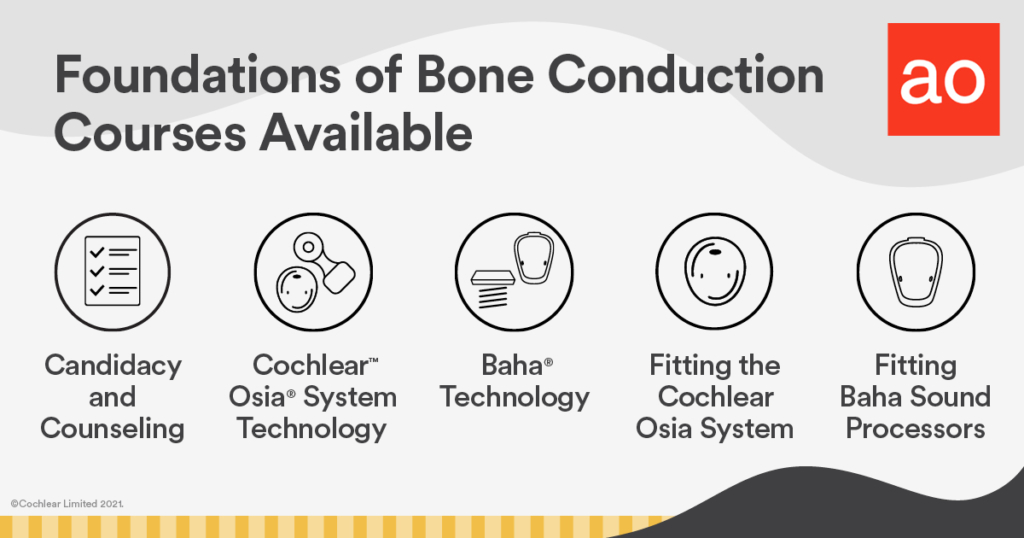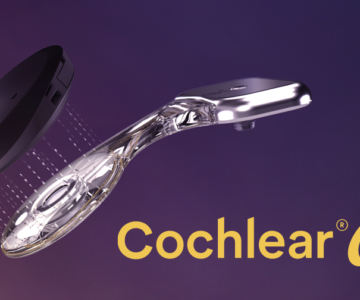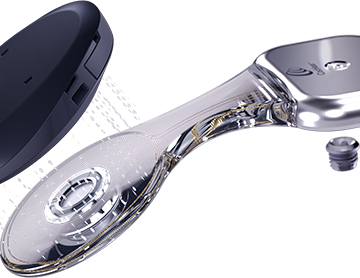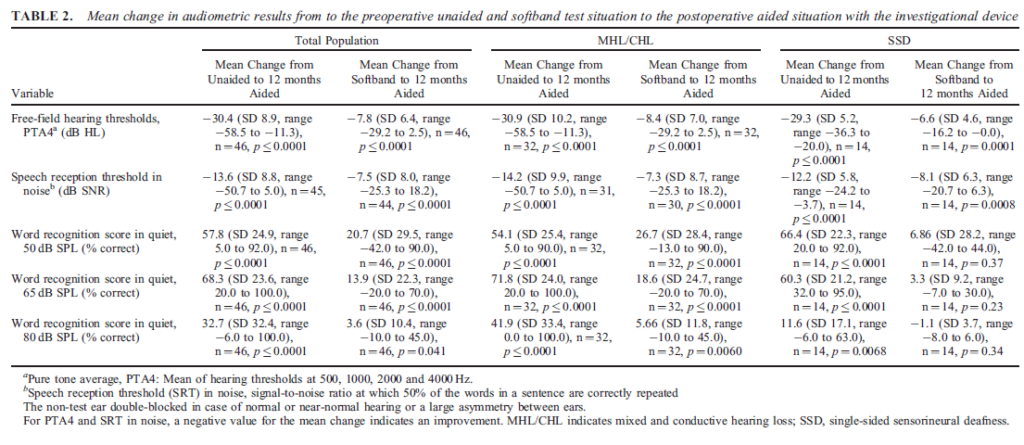Updated 2/23/22
By Melissa Thompson, Baha Product Manager at Cochlear Americas
Before developing the Baha® 6 Max Sound Processor, we asked bone conduction recipients what is most important in their sound processor – and better hearing in noise was identified as most critical to patients. 1
We used this information to design the Baha 6 Max Sound Processor to meet or exceed the expectations of patients, by developing a small, premium-power sound processor that would help them hear better in noisy environments.2,3 Premium-power means providing patients with a device that delivers up to a 55 dB fitting range and a higher MPO, in the same small size as current 45 dB devices on the market.
Why MPO matters
MPO, or Maximum Power Output, is a critical component to achieving these patients’ goals to hear better in noise with a bone conduction solution. MPO is the maximum output that an amplifier can produce and is related to the microphones, power supply and sound producing components of that amplifier.
Research suggests that bone conduction hearing devices with higher maximum power output have the potential to improve speech recognition in both quiet and noisy listening environments.4 Why is this? An improved MPO enables a greater dynamic range, which helps recipients separate sounds more clearly and hear better in noise. An increased MPO also provides more head room should one’s hearing loss progress in the future.
With a fitting range of up to 55 dB SNHL, the Baha 6 Max Sound Processor is able to deliver 7 dB more output compared with the previous generation Baha 5 Sound Processor5,6 (Fig. 1), and provides similar MPO compared with the Baha 5 Power Sound Processor5,7 (Fig. 2).


With this higher MPO, clinical evidence has shown a statistically significant improvement for patients in mean word recognition score in quiet (10.5%) and in mean speech reception threshold in noise (0.9 dB SNR) compared to a 45 dB device.2,3 This higher MPO translates into better real-life experiences for patients.2,3
Transducer technology
How are we able to achieve this higher power output while still maintaining the same small size as current 45 dB devices currently on the market? The answer lies in the optimized design of our BCDrive™ II transducer technology.
The vibrating transducer is the ‘engine’ of the a bone conduction device. Its performance sets, to a large extent, the sound quality, the size, the battery life and the MPO of a bone conduction device.
Cochlear’s electromagnetic transducers are of a symmetrical design with less distortion8, higher reliability9 and better efficiency10 compared to a conventional asymmetrical transducer design (Fig. 3). Optimizing our existing symmetrical electromagnetic transducer design through our BCDrive™ II technology results in more power output in the same small size5,6.

With the Baha 6 Max Sound Processor, Cochlear is able to help deliver on the most critical need for patients: Delivering a 55 dB SNHL solution that provides premium-power to enable patients to hear better in noise2,3, in the same small size as current 45 dB devices on the market.
Want to learn more?
Take our Foundations of Bone Conduction courses on AudiologyOnline to learn more about how Cochlear’s Bone Conduction Solutions and the Baha 6 Max Sound Processor fits into your treatment practice through counseling, demonstration, fitting and support.

References
- Source: Online survey 2018, Cochlear conversations, n=145 adult recipients (Baha 5, Baha 5 Power and Baha 5 SP), US & UK
- Hua H. Baha 6 Max Home test CIR CBAS5779. Cochlear Bone Anchored Solutions AB, Sweden. 2021; D1801512.
- Hua, H., Goossens, T. and Lewis, A., 2021. Increased maximum power output may improve speech recognition with bone conduction hearing devices. International Journal of Audiology, pp.1-8. https://www.tandfonline.com/doi/full/10.1080/14992027.2021.1959953
- Gawliczek T, Wimmer W, Caversaccio M, Kompis M. Influence of maximum power output on speech understanding with bone anchored hearing systems. Acta Otolaryngol. 2020 Mar;140(3):225-229.
- Leung B. Baha 6 Max Connect Datasheet. Cochlear Bone Anchored Solutions AB. Sweden 2021, D1760797.
- Land J. Baha 5 Sound Processor Connect System Datasheet. Cochlear Bone Anchored Solutions AB. Sweden 2019, 630908.
- Land J. Baha 5 Power Connect Datasheet. Cochlear Bone Anchored Solutions AB, Sweden. 2019; D801286.
- Gustafsson J. BCDrive performance vs. conv. bone conduction transducer. Cochlear Bone Anchored Solutions AB, Sweden. 2015; 629908
- Bergs T. BCDrive reliability vs. conv. bone conduction transducer. Cochlear Bone Anchored Solutions AB, Sweden. 2016; D844105.
- Flynn MC. Smart and Small – innovative technologies behind the Cochlear Baha 5 Sound Processor. Cochlear Bone Anchored Solutions AB, Sweden. 2015; 629761.









